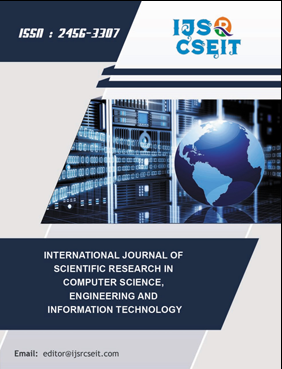Research Trends In Total Quality Management (TQM) : A Comparative Assessment of Publication Output of India And Japan Using Scientometrcs
Keywords:
Doubling time, Growth of rate for Scientific publication, Total quality management, Relative growth rate, ScientometricsAbstract
The study examines Indian and Japan Total Quality Management analysis output on several parameters at the side of growth, analysis communication in core journals, and geographical distribution of publications. The study focuses on the articles disclosed by Indian and Japan and indexed in Science Citation Index – web of Science for the periodfrom 2012 to 2016. India has published 811 papers within the TQM field and received 12768 citations and Japan has published1095 papers and received 9044 citations in the field during the period 2012 to 2016. The study suggests the need to increase the pace of Indian and Japan scientific discipline analysis and improve their quality. It suggests boosting the building ability and mental object to help bridge the scientific discipline gap with leading countries. It conjointly counsels to make competency and knowledge domain to assist bridge the gap between leading countries.
References
- Garfield, E., & Merton, R. K. (1979). Citation indexing: Its theory and application in science, technology, and humanities (Vol. 8). Wiley New York.
- Garfield, E., & Welljams-Dorof, A. (1992). Citation data: their use as quantitative indicators for science and technology evaluation and policy-making. Science and Public Policy, 19(5), 321–327.
- Jagadeesh, R. (1999). Total quality management in India--perspective and analysis. The TQM Magazine, 11(5), 321–327.
- Péter Vinkler. (n.d.). The Evaluation of Research by Scientometric Indicators.
- Ross, J. E. (2017). Total quality management: Text, cases, and readings. Routledge.
- Ravichandra Rao, I.K. and Suma, P. (1999). A Quantitative Study of Indian Engineering Literature. Scientometrics,
- 46(3):605-19. https://doi.org/10.1007/BF02459615.
- Karamourzov, R. (2012). The Development Trends of Science in the CIS Countries on the Basis of some Scientometric Indicators. Scientometrics, 91(1):1-14. https://doi. org/10.1007/s11192-011-0592-6.
- Jain, A. and Garg, K.C. (1992). Laser Research in India: Scientometric Study and Model Projections. Scientometrics,
- 23(3):395-415. https://doi.org/10.1007/BF02029806.
- Tsay, M.T.; Jou, S.J. and Ma, S.S. (2000). A Bibliometric Study of Semiconductor Literature, 1978-1997. Scientometrics, 49(3):491-509. https://doi.org/10.1023/A:1010593824716.
- Arunachalam, S. and Rino, S.I. (2003). Mapping New Biology Research in India and China: an Analysis of Publication,Citation and International Collaboration. 9th International
- Conference on Scientometrics and Informetrics, Dalian,China, August 2003, 1-9. PMid:12713134.
- Sangam, S.L. and Meera. (2009). Research Collobration Pattern in Indian Contribution to Chemical Sciences. Collenet Journal of Scientometrics and Information Management, 3(1):39-45. https://doi.org/10.1080/09737766.2009.10700863.
- Biradar, B.S. and Rajashekhar, G.R. (2010, December). Scientometric Analysis of Biotechnology Literature. In: Sangam and Others (Eds.). Proceedings of National Seminar on Webometrics, Informetrics and Scientometrics, DLISc, K.U. Dharwad. p. 134-45. PMCid:PMC2974139.
- Gupta, B.M.; Kshitij, A. and Verma C. (2011). Mapping of Indian Computer Science Research Output, 1999–2008. Scientometrics, 86:261–83. https://doi.org/10.1007/s11192- 010-0272-y.
- Bhattacharya and Sujit Shilpa. Bhati China and India: The Two New Players in the Nanotechnology Race. Scientometrics, 2012. https://doi.org/10.1007/s11192-012-0651-7.
- Price, D.J. (1963). Little Science, Big Science, Columbia University Press, New York, 119.
- Frame, J.D. (1977). Mainstream Research in Latin America and the Caribbean. Interciencia, 2:143.
- Schubert, A. and Bruan, T. (1986). Relative indicators and Relational Charts for Comparative Assessment of Publication Output and Citation Impact. Scientometrics, 9:281. https://doi.org/10.1007/BF02017249.
- Nagpaul, P.S. (1995). Contribution of Indian Universities to the Main-Stream Scientific Literature: A Bibliometric Assessment. Scientometrics, 32(1):11-36.
- https://doi.org/10.1007/BF02020186.
- Karki, M.M.S. and Garg, K.C. (1997). Alkaloid Chemistry Research in India. Journal of Chemical Information and Computer Science, 37:157. https://doi.org/10.1021/ci960032z.
- Garg, K.C. and Padhi, P. (1999). Scientometrics of Laser Research Literature as Viewed through the Journal of Current Laser Abstracts. Scientometrics, 45:251. https://doi.org/10.1007/BF02458436.
- Kumari, L. (2006). Trends in Synthetic Organic Chemistry Research: Cross-Country Comparison of Activity Index. Scientometrics, 67(3):467-76. https://doi.org/10.1556/Sci- ent.67.2006.3.8.
- Chetri, I.S.; Saini, A.K. and Luthra, R. (2009). CSIR-UGC National Eligibility Test: A Performance Indicator of Basic Science Education in Indian Universities. Current Science, 97(4):490-99.
- Sagar, A. and Kademani, B.S. (2011). Growth and Impact of S&T in Madhya Pradesh during 2000-2009. DESIDOC Journal of Library and Information Technology, 31(1):3-18. https://doi.org/10.14429/djlit.31.1.757
Downloads
Published
Issue
Section
License
Copyright (c) IJSRCSEIT

This work is licensed under a Creative Commons Attribution 4.0 International License.

